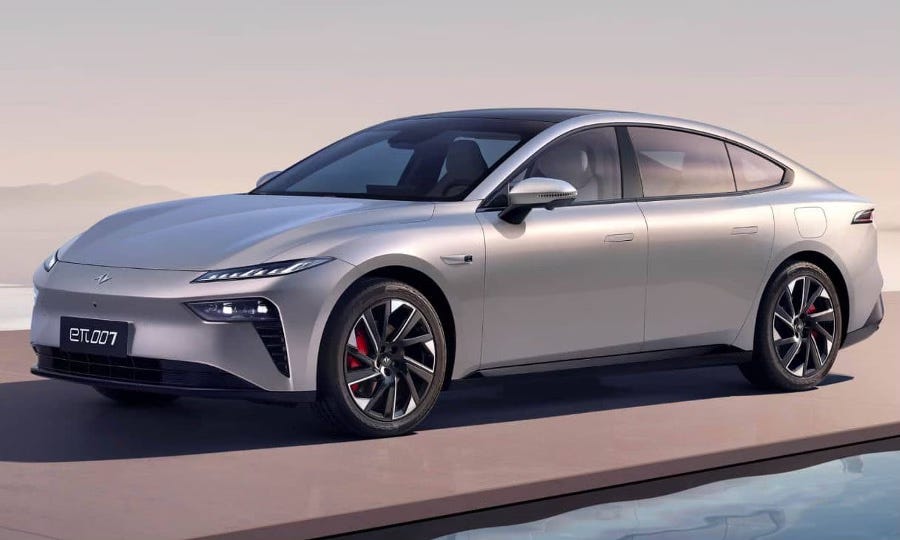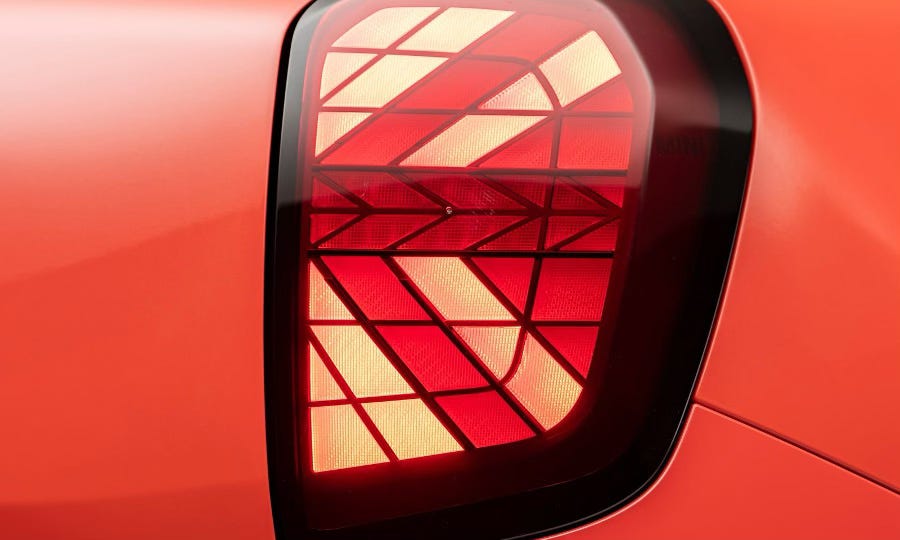Why and how design can leverage place-of-origin more
'Place’ is a touchstone of who someone is. As it is for cars too. Yet for most brands, place it is an under-used asset — design could make more of it in two core ways.
“Where are you from?” — it’s one of the core questions posed when people meet for the first time. ‘Place’ is a consistent touchstone of who someone is, and a core context to share with others as an essential truth. And so it often is for cars too. Think of a car brand and you will also likely think of where they are from and their related place-based identity. Yet for most brands, place it is an under-used asset — design in particular could make far more of it in two core ways. Although, for some car brands, their associated national identities increasingly poses an existential challenge…
The first association people make when they hear the name of a car brand is that it is a car brand not a fashion, or food, or hotel brand — or any other type of brand. But the second association is almost always its nationality. Hear the name BMW, Alfa Romeo, Land Rover, Volvo, Honda, or Jeep and whilst it is a car-brand first, it is a German, Italian, British, Swedish, Japanese, American brand second. Where a brand is from is a headline summary of what it is to people, more so even perhaps than nationality is for a person. And, so, to be known as a car brand from Germany, Italy, England, Sweden or Japan, means that people expect to see traits in the car that they associate with these places, their cultures, their designs. But of the three ways car design expresses place-based identity, most brands could exploit two of them far more (and for some brands their associated place-of-origin may even challenge their ability to exist in the next few years).
The first way car design tells the story of place is through design labelling, to literally use text or icons to communicate place — and increasingly this is going beyond just declaring national origin to one of region, town, or even exact location. This unambiguously cuts-through to almost all audiences, and also suggest pride in origin which is valuable in its own right — if with some slight negative ‘otherness’ for some audiences not in the same region, and maybe a hint of jingoism too. Good examples include the pioneering Swedish flag in all Volvo cars (I would say that, it was one of many direct design ideas that were part of the Volvo design strategy that CDR authored in 2012), the etched longitude and latitude on Lucid Air kick-plates, the Union-Jack rear-lights of a Mini, Porsche now marking in clear black text ‘Stuttgart’ on their logo, and (outside of automotive) ‘designed by Apple in California’ on the underside of Apple lap-tops. Place-of-origin can be tangibly evident through design labelling.
The second way place-based identity is evident in car design is when cars have some design aesthetic associated with their place-of-origin. This is a variable combination of designs that are visual expressions of the character or identity of a particular place and those that look like other designs from the same place — arguably the first begetting the second. Superficially fifties American cars shared a similar showy, large-scale, aeronautic inspired design aesthetic not evident in other countries, which itself was an expression of the unique economic and cultural times of post-war America. And today’s new wave of Chinese sedans in their grille-less streamlined fast-back form express that region’s particular affinity for efficient and advanced digitally enabled electric cars.

Other designs that quite strongly expressed nationally specific design aesthetic include the 1998 Maserati 3200GT, 2002 Nissan Cube, 2009 Ford Flex, 2010 Bentley Mulsanne, 2013 Volkswagen Up, 2021 Volvo Recharge concept
Arguably having a design aesthetic associated with place-of-origin is — or certainly was — a tacit ingredient of car design that few designers were conscious of. An American designing in America an American car for Americans that competed primarily against other American car designs is an example of the unconscious closed-loop of cultural creation and consumption of the first half of the history of the car. But now there is both greater awareness of design aesthetic associated with place, and also less evidence of it as brands need designs to resonate with people in many different markets, and as the car design work-place becomes more international reducing tacit ability to imbue designs with a true place based identity. Yet with a more international market comes ever greater awareness of other countries’ histories, of different cultures, and of regionally distinct design. Whilst the bird’s-eye view of the collective global car market is an amorphous mix of needs and tastes, zooming in shows an ever more educated car customer with commensurate growing appetite for place-based design as part of a legitimate way to realise a richer (brand specific) design story too — which in turn is a significant part of ‘premium design’.
The third way that cars sometimes leverages place-of-origin is through design re-appropriation — when car design consciously re-appropriates non-automotive regionally specific design. And this rarely works. Examples include: the curving form of the flying eaves of a Han-era Chinese roof influencing the shape of a grille; Chinese dragon face-like headlamp shapes; feature lines that purport to emulate the strokes of Chinese calligraphy. Few customers will notice these references, those that that do will mostly then be aware of their incongruity and lack of legitimacy — design re-appropriation from completely different times and realms is fundamentally illegitimate.
So these are the three ways that design harnesses place: through design labelling, through design aesthetic, through design re-appropriation. With design labelling and design aesthetic being the two ways that many brands might gain more value from, and design re-appropriation rarely adding value.
But not all brands will benefit from car design expressing place-based identity. Some places associated with brands are either not well known, or have few positive associations that will valuably reflect back on the brand. And, significantly, some places have associations that are increasingly jarring with what is becoming the identity of the contemporary car.
China and California and South Korea are now closely associated with leading consumer technology (only a few decades ago none of these regions were, whilst Japan and to a lesser extend Germany used to be). So cars from these regions have the opportunity through design labelling and design aesthetic to convey their ‘tech-centric’ identity aligned with both audience’s expectations of where they are from, and with what people increasingly want their cars to mean — and to take this aspect of their identity and uniquely integrate it into their brand specific design strategy.
Meanwhile, bands from places known for culture and design far removed from this digital centric identity of the mid 21st century car will increasingly struggle. Where once the idea of the artisan crafted Italian coupe, race-derived British roadster, even German engineered sedan, aligned to central qualities of the twentieth century car, now they have been usurped by the over-the-air updated user experience of the silicon valley crossover, the connected all-electric sedan from Seoul, and the voice-controlled near-autonomous fastback of Shanghai. So it may be that brands from places that are incongruent the identity of the mid-twenty-first car will struggle to survive — unless design can reframe their known place-based associations in ways that are relevant and authentic to some facet of the contemporary car and to the place they are from.
As the international car customer understands learns more about places, as brands are invariably known to be from a place, and as the meaning of the car shifts, so there is clear scope to make more of design labelling and design aesthetic. To not just parrot design cliches of the regions, but to consciously shape how some facet of ‘place’ can be part of a distinct brand expression — and expression that aligns also to the mid-twenty-first identity of the car.








